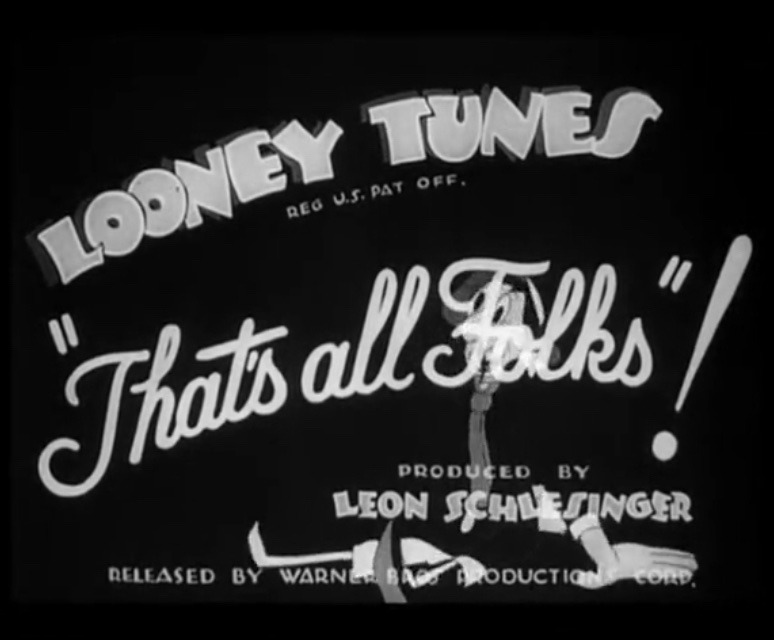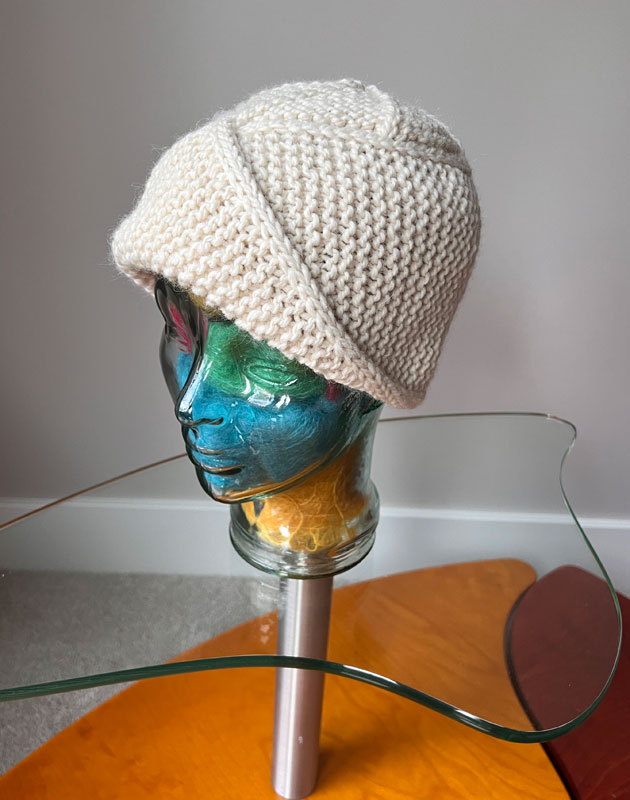
This is my third in a series of posts on how the same yarn works up in different patterns. Maybe it’s getting old? But I’ll press on anyway.
This is Jared Flood’s Quincy. It’s the fourth time I’ve knit this pattern and this Quincy’s for me. Actually, I kept one prior Quincy but somehow it managed to escape from my hat drawer. It’s a seriously excellent pattern. It feeds my insatiable appetite for cool things to knit in garter stitch. I really enjoy knitting applied I-cord onto garter stitch fabric. And the interesting Robin Hood fold is great fun to knit–with directions that need to be followed closely but are spot on.
I knit this Quincy in Berroco Ultra Alpaca Chunky. In the past I’ve knit this hat mostly in Brown Sheep Lamb’s Pride Bulky. It looks great in the Brown Sheep. But the Berroco yarn is a better match in terms of yardage. It was close, but I was able to knit it with one 100 gram skein (131 yards). It would have been a knuckle-biter on yardage but I’d purchased two skeins just to be on the safe side.

The alpaca in the Berroco yarn makes this Quincy more drapey than in the more sturdy Brown Sheep. I like it anyway. And this version is super cozy and very warm.
Here’s a look at the beauty of a crown. A simple graceful pinwheel.
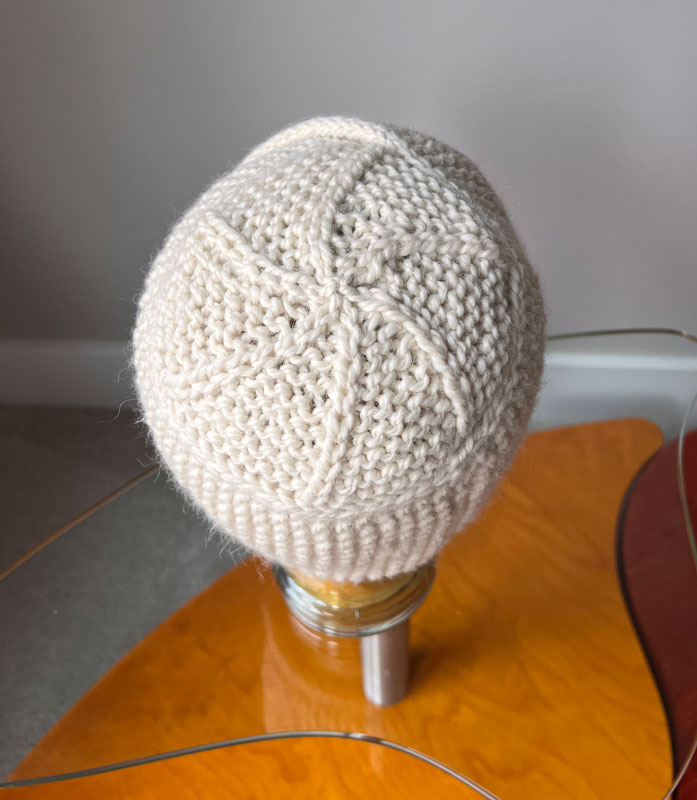
So with that extra skein of Ultra Alpaca begging to be knit, I looked for another bulky hat pattern. I’d been meaning to knit Fernhill again. It’s a freebie from Kate Gagnon Osborne included in Kelbourne Woolens Year of the Bulky Hat series. I knit my first version in a color-changing skein of Hayfield Spirit Chunky. It actually worked up quite nicely. (More on my first Fernhill later in this post.) But a more tame version called to me.
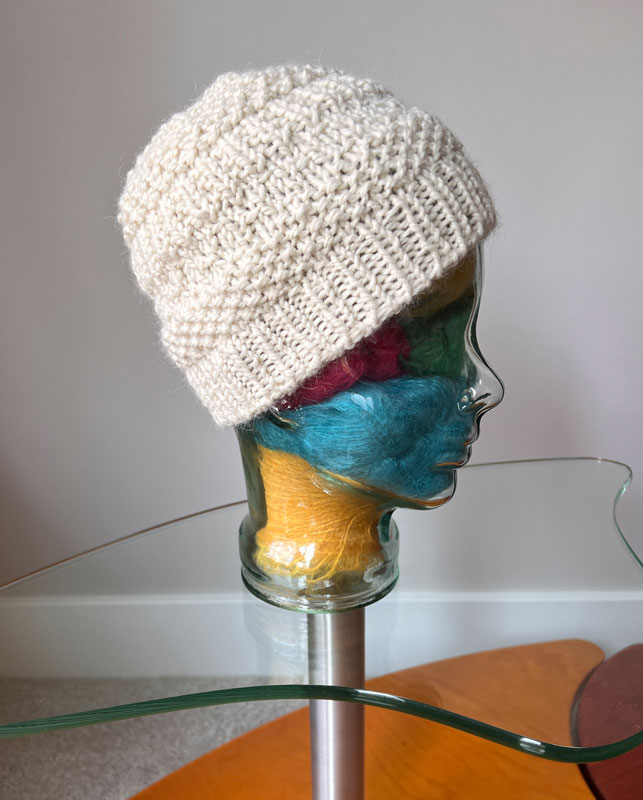
The Berroco Ultra Alpaca knit as this gauge doesn’t have great stitch definition. But I’m still pleased with the result. Since it’s already disappeared from my pick-your-gift stash, I declare it a success.
The crown decreases create almost a snowflake look, especially knit in this natural colorway.
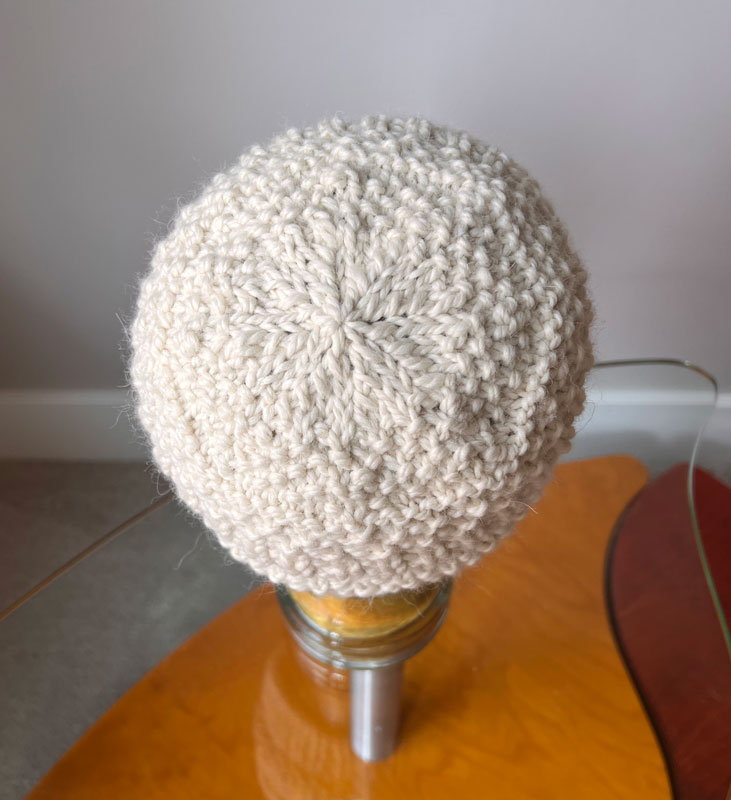
Fernhill is a dainty yarn-eater. It used only 80 grams of yarn and left me with a small but still useful amount of Ultra Alpaca. I decided to knit some sheep.

I knit my sheep from the pattern in Bonnie Gosse’s and Jill Allerton’s A First Book of Knitting For Children. It’s a delightful one-piece knit that an experienced knitter can knit in an hour or two. It’s also a great first project for a new knitter. Such a sweet result.
Finally, as promised, here’s my first version of Fernhill knit in Hayfield Spirit Chunky. Somehow I managed to miss posting the project on my blog before this. It’s a completely different look with somewhat better stitch definition.
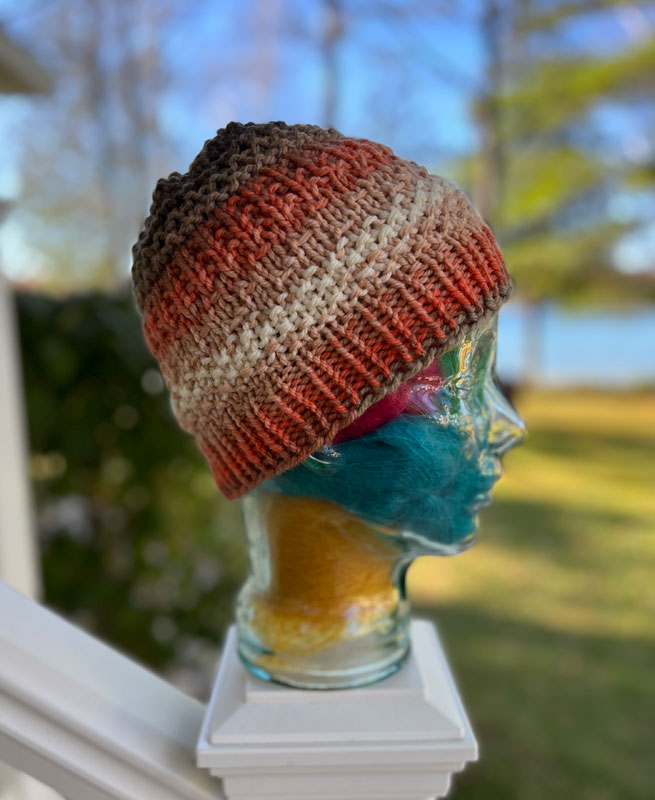
The crown snowflake still forms though here it’s obscured some by how the color change worked out.
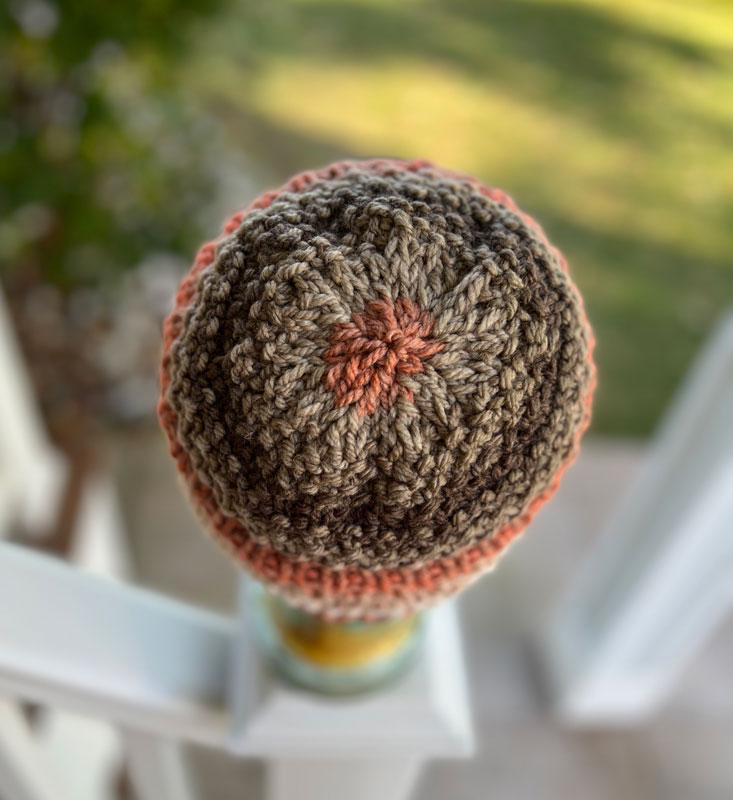
I’ve had great fun knitting “stuff” out of the same yarn. But if you’ve grown tired of my fascination with the subject, I can say now:
